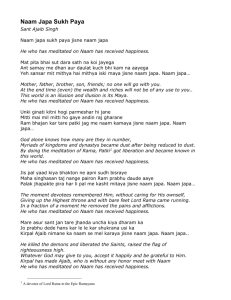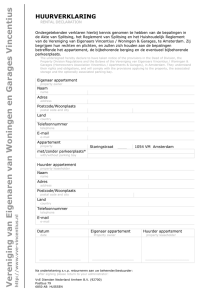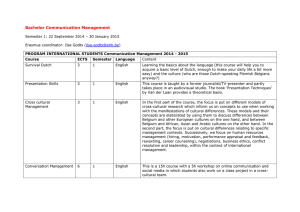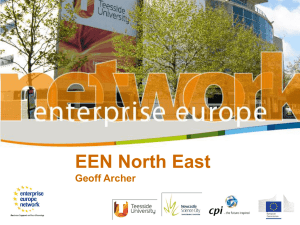Tentamen MARSCI2 EECS 2014
advertisement
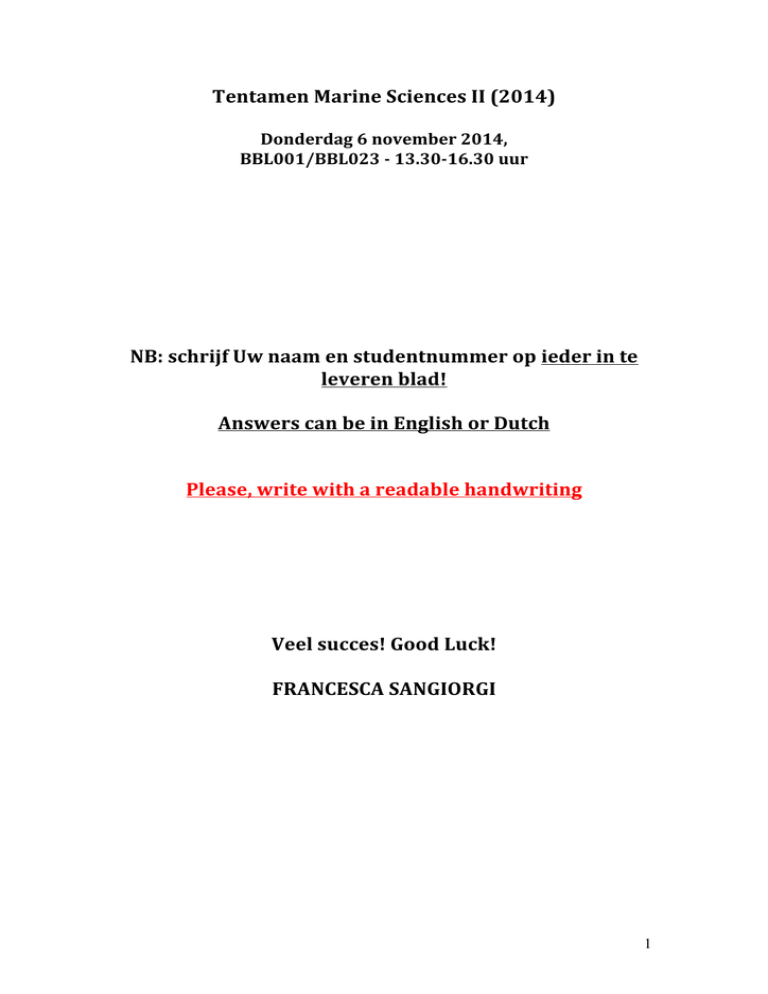
Tentamen Marine Sciences II (2014) Donderdag 6 november 2014, BBL001/BBL023 -­‐ 13.30-­‐16.30 uur NB: schrijf Uw naam en studentnummer op ieder in te leveren blad! Answers can be in English or Dutch Please, write with a readable handwriting Veel succes! Good Luck! FRANCESCA SANGIORGI 1 Naam: Studentnummer: 2 Naam: Studentnummer: Questions Francesca Sangiorgi (intro, geomorphology, primary productivity and decomposition, estuaries, disturbance and conservation) 1) The location of a coast depends PRIMARILY on TWO factors. a) Name them. Factor 1: Factor 2: b) Beaches (mostly) consist of loose particles: What would you investigate/look at to understand if it is a low- or high-energy environment? Why? 2) The occurrence of different phytoplankton groups in the waters usually follows a typical seasonal succession: what species/groups are most abundant in the Dutch waters? Why? WINTER: SPRING: SUMMER: AUTUMN: 3 Naam: Studentnummer: 3) Estuaries are –perhaps- the most naturally stressful of all aquatic systems. Name 1 important stress factor affecting a planktonic organism and 1 affecting a benthic organism, which live in estuary environments. Write the name of the organism you want to consider and explain what factor causes stress and why FACTOR 1 (planktonic): FACTOR 2 (benthic): 4) a) What is functional biodiversity and why it may be more important than species biodiversity? Ecosystem functioning b) What are the 3 possible relationships between ecosystem functioning and functional biodiversity? Explain it with a graph. Biodiversity c) Which one of the above occurs very frequently in ecosystem studies? Why? 4 Naam: Studentnummer: 5) Return to Neverland is unlikely to occur. This needs to be taken into consideration when making management decision and setting up restoration targets. Explain this concept preferably with a graph and do not forget to indicate what the axes represent. 6) Sea-level rise affects and will affect the coastal areas of the entire world. Why are some areas more vulnerable than other? Name 3 factors, which can synergistically operate with sea-level rise to increase the vulnerability of coastal zones. FACTOR 1 FACTOR 2 FACTOR 3 5 Naam: Studentnummer: 6 Naam: Studentnummer: Questions Bas van de Schootbrugge (plate tectonics, waves, tides, rocky shores) 1) Our Atlantic coast is a passive margin. Describe the difference between an active and a passive margin. 2) Explain the statement: "Tides are the longest waves on Earth"? 3) Which two factors control tides? Make a drawing. 4) Rocky shores show strong zonations. Which zones are distinguished and what is controlling them? 5) Give an example of a "Keystone Predator" and the role it plays in a rocky shore ecosystem? Antwoord(en)/Answer(s): 7 Naam: Studentnummer: 8 Naam: Studentnummer: Questions Sabine Gollner (sandy and muddy shores) 1) Vegetation in the dunes is exposed to moving sand, high temperatures, strong winds, dryness and high salinity. Name three adaptations how plants can deal with these circumstances. Adaptation 1: Adaptation 2: Adaptation 3: 2) What is the RPD in sediments, and how can you recognize it in the field? 9 Naam: Studentnummer: 10 Naam: Studentnummer: Questions Appy Sluijs (isotope chemistry) 1. Wat is isotopische fractionatie? . . . . 2. Onderstaande figuur (European Environment Agency Database) laat metingen heen van de pH van de oppervlakteoceaan rond de Canarische Eilanden (1995-2004). Er zit een sterke periodieke variatie in deze dataset. a. Op welke tijdschaal is deze variatie? . b. Noem twee redenen waardoor deze variatie zou kunnen worden veroorzaakt. Gebruik reactievergelijkingen in je antwoord waar relevant. . . . . 11 Naam: Studentnummer: . . . . c. Er zit ook een lange-termijn trend in de data richting lagere pH waarden. Waardoor wordt deze vermoedelijk veroorzaakt? Gebruik een of meerdere reactievergelijkingen in je antwoord. . . . . . . 3. In zeewater opgelost CO2 heeft een andere koolstofisotopische samenstelling dan algenbiomassa. 3a. Is de δ13C van algen hoger of lager dan de δ13C van CO2? . 3b. Zijn algen dan relatief rijk of arm aan 13C ten opzichte van de CO2?. . Arme jantje een alleen maar algen. 3c. Is zijn δ13C hoger of lager dan die van algen? . 3d. Met hoeveel? (vergeet de eenheid niet) . 12 Naam: Studentnummer: Questions Stefan Schouten (organic molecules, organic matter) 1) a. Marine biomass is composed of a variety of different classes of organic compounds. Name at least three classes of organic compounds. . . . . . b. Which organic compound class degrades the slowest after cell death? c. What is oxygen exposure time and how is it important for the preservation of organic matter? 13 Naam: Studentnummer: 2a. What is a biomarker lipid? Give an example. b. What is an organic proxy? c. Describe briefly how stable carbon and nitrogen isotopes of cell material of organisms can be used in food web studies. 14 Naam: Studentnummer: Tjeerd Bouma (spatial ecology, ecosystem engeneering) 1) What do we mean with Windows of Opportunity for mangrove establishment? 15 16 Naam: Studentnummer: Johan van de Koppel (spatial ecology) 1) Regular patterns are observed in a wide range of ecosystems, such as mussel beds, arid bushlands, and peat lands. Many of these ecosystems are explained by the interaction between two types of interactions. Which two types are they and at what scale (relative to each other, e.g. small or large) do these operate: . . 2) The net effect of the interaction between these two types of interaction is that the effect that any organism has on other organisms of the same species varies in space. The effect can be positive or negative. Please draw in the graph below what feedback effect an organism has on others as a function of distance This scale-dependent interaction follows a mathematical principle for pattern formation that was first proposed by an English mathematician. What is the name of this mathematician, and what is the name of this principle. 17 Naam: Studentnummer: 18 Naam: Studentnummer: 19 Naam: Studentnummer: 20
